#Electrical Engineers
Explore tagged Tumblr posts
Text
Switchgear Solutions for Solar and Wind Energy Systems

Why Switchgear Matters in Solar and Wind Systems
Switchgear plays a central role in controlling, isolating, and protecting electrical equipment. In renewable energy applications, it helps:
· Manage power flow from variable energy sources.
· Protect systems from faults or overloads.
· Ensure seamless grid integration and disconnection when needed.
Unlike traditional power plants, solar and wind systems generate intermittent power, requiring switchgear that can handle dynamic loads and frequent switching.
Challenges in Renewable Energy Applications
Here are some of the unique challenges renewable energy systems face — and how they impact switchgear selection:
1. Variable Output
Solar and wind energy production fluctuates based on weather and time of day. This demands switchgear that can:
· Handle frequent load changes.
· Operate reliably under fluctuating voltages and currents.
2. Decentralized Generation
Unlike centralized grids, solar and wind systems are often spread out across multiple locations.
· Modular, compact switchgear is preferred for such installations.
· Smart monitoring becomes critical to manage performance remotely.
3. Harsh Environments
Wind turbines operate at high altitudes, and solar farms are often exposed to heat, dust, or salt.
· Switchgear needs to be rugged, weather-resistant, and have high IP ratings.
· Outdoor switchgear enclosures and temperature management are essential.
Key Features of Switchgear for Solar & Wind
When designing or upgrading renewable energy systems, look for switchgear that offers:
1. Remote Monitoring and Control
Smart switchgear integrated with IoT technology allows operators to track real-time data, detect faults early, and optimize system performance.
2. High Interruption Capacity
Wind and solar systems may experience voltage spikes. Modern switchgear provides high breaking capacities to safely interrupt fault currents.
3. Modular Design
Allows for easy upgrades and maintenance — crucial for scaling renewable installations.
4. Eco-Friendly Design
Look for SF₆-free switchgear that uses clean air or other sustainable alternatives to reduce environmental impact.
5. Hybrid Capabilities
Switchgear that can connect both AC and DC sources is increasingly valuable in mixed-source grids.
LV, MV, and HV Switchgear for Renewables
· Low Voltage (LV) Switchgear: Used in residential or small-scale solar systems. Compact, safe, and cost-effective.
· Medium Voltage (MV) Switchgear: Ideal for commercial and industrial solar/wind applications.
· High Voltage (HV) Switchgear: Essential for utility-scale wind farms or solar plants feeding into the national grid.
Each type requires specific protection, metering, and automation components tailored to its load and system requirements.
Final Thoughts
Switchgear is the backbone of any successful solar or wind energy system. As these technologies become more mainstream, the demand for resilient, intelligent, and environmentally friendly switchgear solutions will continue to rise.
Whether you’re an energy consultant, project developer, or facility manager, choosing the right switchgear today will set the stage for long-term efficiency, safety, and scalability.
8 notes
·
View notes
Note
tell me everything about AC to DC filters Right Now
:0
Dear god.
OK I have to make some assumptions or else this is going to get really long. I am going to assume that you already know what AC and DC are. I am going to assume that you took (and passed) geometry, so a sine wave and it's variations are familiar to you. I am also going to assume that you also know the difference between voltage, current, and resistance.
So, what are AC to DC, why do we care about that? Well, the electricity coming out of the wall is AC, but in order to, lets say, charge your laptop battery, you need DC. In fact, if you look at a laptop charger, you'll see The Brick. The thick rectangle that gets hot when charging the laptop.
THAT'S THE AC TO DC CONVERTER
I just called it converter instead of filter. Why? Because filters technically only remove a 'ripple' from DC current, so a current that's almost DC but not quite. If you are making the entire jump from AC to DC, then that's called a converter.
Now here's where things get fucked.

These are all of the parts after the plug. The load is your laptop, the regulator is your filter.
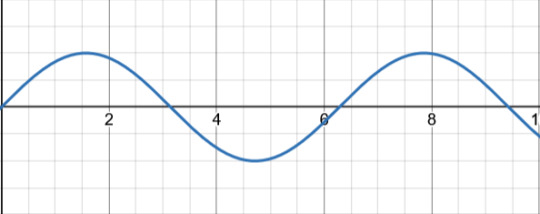
Let's say that this is your AC signal (this graph showing the voltage over time). Now, the first thing this passes through is the transformer, which only adjusts the voltage to the correct level. Some devices need it higher, some lower. Let's say that this transformer is a step up transformer, because it made the signal bigger.

The next step is the rectifier. Now, traditionally this part is taught in stages in order to show it's affect on the signal. I'm going to speed run that. I will assume that you're familiar with what a diode is. If you aren't, just know that it only allows current to flow in one direction. So, anything going backwards will be removed. Picture a one way valve.
So, if we were to send this signal through one diode, then that would leave us with
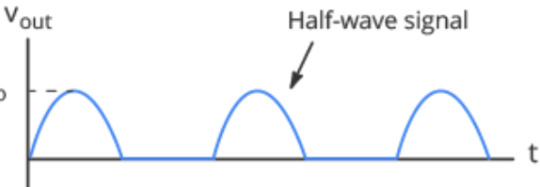
just the positive half! That's why this setup is called a Half-wave rectifier.
But what if we were to use two diodes. As in, fill in the blank spot that the negative half left with another positive bump. That would give us

This lovely thing! Which is great, but it requires another AC signal that is 180 degrees off from the original one in order to exist. Which, transformers exist which can provide that, but it's not cost effective. So, that leaves us with the most common setup, the Bridge Rectifier.
I've been skipping the circuit diagram so far, but now it's important.
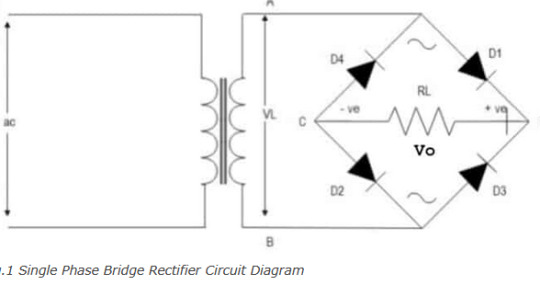
THIS thing is a bridge rectifier connected to the transformer (yes that's what transformers look like according to circuit diagram shorthand). Now, I am American, and for some reason American electricians use that up and down sharp thing in the middle of the diamond to indicate a resistor. Europe uses a rectangle. Again, I am going to assume that you know what a resistor does.
Those four black triangles with lines? Those are diodes. The line across the tip of the triangle indicates what direction they are allowing current to flow into. Now picture you were a positive signal flowing in through point A into the bridge. There's a split in the circuit, but one way (diode D4) is blocked, so you have to go across diode D1. Now you're at the edge of the diamond, once again two ways you can go. You head towards diode D2, because diode D3 won't let you through. What that looks like is this
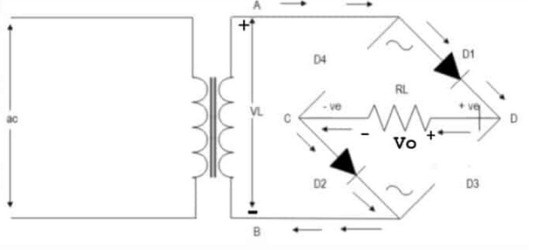
What about the other direction? Well that looks like
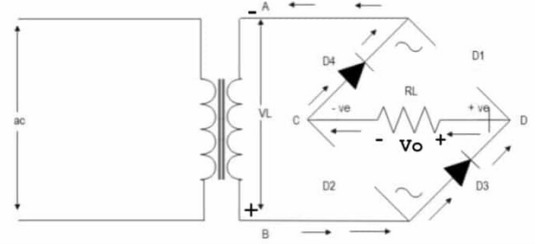
Notice that the edges of the diamond are called out? Points C and D. That's the money makers. You see, if you plug into point D as your positive and C as your negative, you get a full wave signal! (so sorry for not going fully in depth on why that works just trust me it's a bit of a mess and should really be taught with the actual circuit in front of you, not across the internet like this)
A full wave signal is completely positive, but it's not exactly DC yet. That's where smoothing comes in. This is done with a capacitor!

The capacitor is charged up and then slowly releases it's charge. But before it can completely discharge, it gets recharged by the next wave. Quick review, a capacitor is like a battery where it can be charged up, but unlike a battery which holds charge with chemistry, capacitors hold charge with physics. They can still wear out, but not nearly as quickly as a battery.
What does that red line look like? Well, almost like a straight line, except it has RIPPLES! That's right, we're finally back to the filter! Or the regulator as the diagram calls it. Means the same thing.
Sometimes, this step is skipped. If the device getting signal isn't too sensitive or it's just cheep, then the electricity stays bouncy. Some devices really care about any fluxuation in the signal, in which case they get a big expensive filter.
Unfortunately, the inner bits of a filter are many, so I won't be going into all of that. But you want me to go into that, so I will show a circuit diagram.
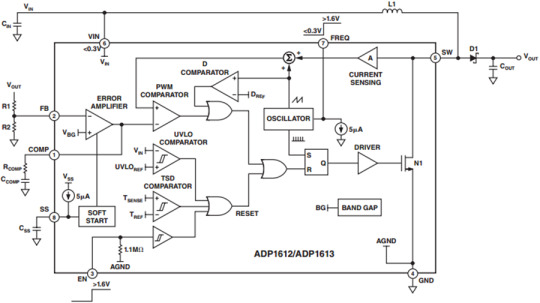
This is a diagram of the ADP1612
This website has a downloadable version of the spec sheet!
But that's a level of detail that you usually only get into if you are planning on building a circuit. The day that you're flipping through spec sheets in order to check compatibility is when you've really become an engineer.
So that's how you go from AC into DC. Yes, I just spent an hour typing this all out. I like electricity a lot.
Here's a GREAT video that goes over all of this but the guy actually has a circuit and an ossiliscope in front of him to show the signal.
#electricity#electronic#electrical engineers#physics#AC to DC rectifier#electrical engineering#mmm electricity for power#ask#literally several college classes worth of info that I am skipping in this#ough my circuit bits#I chose the perfect degree I am built for this shit
11 notes
·
View notes
Text

it’s still so depressing to me that i had to turn this down because I was literally in my fall semester of electrical engineering. (I was deferred then accepted)
#art blog#art#artblr#artists on tumblr#artwork#digital art#my art#original art#small artist#traditional art#art school#electrical engineers#college#art college#saic#School of art institute of chicago
3 notes
·
View notes
Text
💥Attention💥
If U are interested ,, I will send this PDF for Free !!📚⬇🥰

#books and reading#books & libraries#books#california#usa#brazil#chicago#england#engineering#environmentalengineering#environment#electrical engineers
2 notes
·
View notes
Text
"If you're electrical you can close your eyes and imagine stuff, it's amazing." (Statics prof. complementing electrical engineers (for fun))
#my brain is actual mush#electrical engineers#i fear you#university#student life#college#school#student#quotes#quote blog#college quotes#university quotes#dialogue#statics#statics class
2 notes
·
View notes
Text
This is exactly what I want my future hypothetical family to be. This is what I will pass down to my children.
my family is fucking addicted to macgyvering and it's becoming a problem. every time something in this house breaks, instead of doing the sensible thing of replacing it or calling someone qualified to fix it, we all group around the offending object with a manic look in our eyes and everyone gets a try at fixing it while being cheered on or ridiculed by the rest.
it's a beautiful bonding activity, but the "creative" fixes have turned our house into a quasihaunted escape room like contraption where everything works, but only in the wonkiest of ways. you need a huge block of iron to turn on the stove. the oven only works if a specific clock is plugged in. the bread machine has a huge wood block just stapled to it that has become foundational to its function. sometimes when you use the toaster the doorbell rings. and that's just the kitchen.
it's all fun and games until you have guests over and you have to lay out the rules of the house like it's a fucking board game. welcome to the beautiful guest room. don't pull out the couch yourself you need a screwdriver for that, and that metal rod makes the lamp work so don't move it. it also made me a terrifying roommate in college, because it makes me think i can fix anything with enough hubris and a drill. you want to call the landlord about a leaky faucet? as if. one time my dad made me install a new power socket because we ran our of extension cords
#I have a similar approach that was much less state sanctioned#which arose from being a neglected child that was very mechanically apt (defended from aircraft mechanics#electrical engineers#and physicists)#I wasn’t TRAINED per se but the tinkering gene was alive and well in these hands#and we lived in a probably legally condemnable house#so I macgyvered the shit out of anything and everything#did I electrocute myself a lot? Hell yes#did I learn by age 7 where the breakers were and how to turn them off before doing wiring? also hell yes. improvise adapt overcome bitches#our parents didn’t care to actually repair anything so if I wanted a functional house for myself and my brother I had to figure it out#and I loved a puzzle and I liked SOLVING a puzzle even more#so you better bet there was a catch to like nearly every function in that house#‘don’t touch that screwdriver it’s stabbed into the Sheetrock there for a reason it’s conducting the electricity for the dining room light’#’yeah I know this screwdriver is in the laundry room just trust me pls don’t remove it it took forever to find where to stab it’#on the flip side I have SINCE gotten a degree in engineering and 9/10ths of a doctorate in physics so#I can do very state sanctioned macgyvering now#with the spirit of my winging-it youth and the knowledge of MIT#I can send my family off into the world with solid fixit skills
61K notes
·
View notes
Text
How Smart Electric Grids are Revolutionizing Renewable Energy?
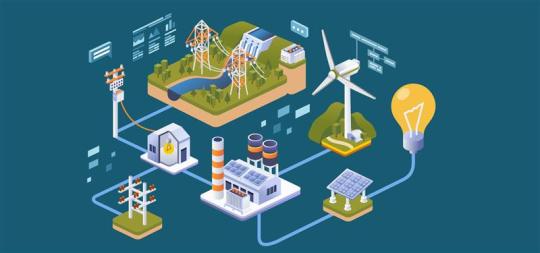
As the world moves towards cleaner and more sustainable energy sources, one major innovation which is helping to make this possible: Smart Electric Grid, but what exactly Is it and why it is so important for renewable energy integration to lead towards green energy?
What is a Smart Electric Grid? A Smart Electric Grid is an advanced electricity network that utilizes digital technology and two-way communication to improve the reliability, sustainability and efficiency of electricity delivery. It goes beyond the traditional one-way flow of electricity to enable control, real-time monitoring, and automation of the power grid.
Why does Smart electrical Grid matter in Renewable Energy? The Smart Grid is the modernization of the electricity delivery system in the era of renewable energy integration. A smart grid differs from the traditional grid in that it allows two-way communication of electricity data, rather than a one-way flow. Smart grids enable real-time data collection concerning electricity supply and demand during the transmission and distribution process, making monitoring, generation, consumption and maintenance more efficient which matters more in the renewable energy sector.
Most electricity grids are based on one-way interaction from the stages of generation to consumption. Smart grids, on the other hand, integrate the action of all users in the power network using computer-based remote control and automation. This two-way interaction is what makes the grid “smart”. Like the internet, the Smart Grid consists of controls, computers, automation, telecommunication and equipment that work together, but in this case, these technologies work with the electrical grid to respond digitally to our quickly changing electric demand.
Future of Smart Grid Technology
There is no question that the future of energy is moving towards more decentralized, flexible, and sustainable power provision. But we are talking about a global industry that is over a century old—and often must rely upon infrastructures from nearly that long ago to serve billions of people and their rapidly changing demands.
Other challenges include complex regulatory changes, the rise of prosumers, and new start-ups emerging in deregulated regions. Like any journey of business and digital transformation, the move to smarter grid management starts with a few cautious steps before breaking into a run. Technologies in the utilities sector are undoubtedly powering and enabling the evolution of this sector.
• Communicating a vision of the smart grid and aligning teams and stakeholders around it • Strengthening consumer education about the changes and opportunities to come • Providing win/win motivation for consumers, prosumers, and potential distribution partners • Developing metrics to monitor progress in the implementation and effectiveness of smart grids • Keeping the customer experience and customer retention in mind, given the additional competition and decentralization of a smart energy market
👉 To understand this transformation in depth, read The Role of Smart Electric Grid in Renewable Energy
Conclusion As we know, the world is undergoing a fundamental transition in the way energy is generated, transmitted, distributed, and used. A drive towards more sustainable sources, reduced waste, and lower emissions, together with a significantly increasing demand for Smart Electric Grid, is redefining the roles of transmission and distribution system operators and the regulatory framework under which they operate.
Manav, through its advanced engineering and consulting expertise, is contributing to this transformation by enabling innovative solutions for renewable energy integration and the future of smart grid technology.
0 notes
Text
Maximising Rooftop Solar Efficiency Through Strategic Electrical Planning

Rooftop solar systems are a smart investment for those looking to save on energy costs and reduce their grid dependency. However, an effective solar system requires strategic electrical planning. That's because solar electrical plans ensure that all components work together to optimise performance. This article will outline how careful planning can enhance the efficiency of your rooftop installation, ensuring the best return on investment (ROI).
Link Between Electrical Planning and Solar Efficiency
There are a number of issues that reduce efficiency including improper wiring, mismatched components, and overlooking shading or layout challenges. If disregarded, it can result in wasted energy loss and higher costs. That’s why, electrical planning should be done from the start, not as an afterthought.
With strategic electrical planning, you’re able to understand how panels, wiring, and inverters work together in your rooftop solar system. In this way, it ensures that the wiring is properly sized and routed, selecting the right components, and configuring the inverters for efficient energy conversion. As a result, the system can run at its best and minimise energy losses.
Tips for Optimising Rooftop Solar Installations
A well-planned rooftop solar installation increases energy efficiency and reduces costs. Here are some practical tips to improve your solar system, from panel placement to electrical setup.
Optimal Panel Configuration and String Design
The configuration of your solar panels directly affects their efficiency. That said, orienting and tilting the panels to maximise sunlight exposure is crucial. In Australia, the optimal tilt angle is typically between 20 and 30 degrees, depending on the location, to capture the most sunlight throughout the year. The panels should face true north to ensure maximum exposure to the sun.
In addition to that, spacing the panels adequately prevents shading and allows for proper airflow, which helps improve their efficiency and longevity. In shaded areas, using Maximum Power Point Tracking (MPTT) inputs or microinverters allows each panel to operate independently. In this way, it minimises the impact of shading on the system. Lastly, balancing string voltage to match the inverter's input range ensures optimal energy conversion and peak performance.
Site Assessment and System Protection
Before installation, assess both environmental and structural factors that may affect system efficiency. This includes considering roof orientation, tilt angle, shading, and potential obstructions like trees or nearby buildings. A thorough site assessment ensures maximum sunlight exposure and energy generation.
On the other hand, it’s essential to install Surge Protection Devices (SPDs) and Overcurrent Protection Devices (OCPDs) for safe and reliable operation. These protect your system from electrical surges and overloads. Proper grounding is also crucial to prevent electrical hazards and ensure the system runs smoothly without damage.
Panel Placement, Electrical Setup & Future Expansion
It’s best that you properly orient and tilt panels to maximise sunlight exposure. You need to minimise cable lengths to reduce energy loss, and ensure the electrical setup is well-organised and efficient. Keeping the inverter in a shaded, well-ventilated area helps prevent overheating, improving system performance in general.
As for expanding in the future, you need to leave room for potential system upgrades, such as additional panels, inverters, or batteries. By planning for future expansion, you can avoid costly retrofits and downtime. Ensure space for conduits and other components, which will make adding capacity later much easier and more affordable.
Conduit and Wiring Strategy
A solid conduit and wiring strategy in solar electrical plans ensures rooftop solar installations perform efficiently. One important factor is minimising voltage drop by selecting the right size and routing. Using the correct wire reduces the energy loss as electrical current flows through the wiring. In this way, more energy reaches the inverter.
Over time, resistance can also cause efficiency losses, which can accumulate and reduce the system's performance. With longer cable runs, it increases resistance, which causes more power to be lost as heat. This results in a decrease in the amount of power being delivered to the system, further reducing its efficiency and potentially increasing operating costs.
To prevent this, keep cable lengths short and identify the best route while staying compliant with local codes. Lastly, using the right materials and insulation that can handle temperature changes and UV exposure helps keep the wiring system durable and reliable.
Copper cables are often chosen for their strong conductivity and resistance to corrosion, making them suitable for short runs and areas needing high performance. Aluminium cables are lighter and more affordable, making them a good choice for long-distance runs if they’re properly sized and installed. Choosing the right type of cable for the job helps keep the system efficient and safe.
Inverter, Panel, and Battery Selection and Placement
Choosing the right inverter is important to match the system’s layout, shading, and energy needs. That said, electrical contractors in Sydney recommend matching the inverter size to the solar array—too big, and it's underused, too small, and it may lose power during peak times. If batteries are included, hybrid inverters are a good option for both on-grid and off-grid use.
Inverter placement also matters. It should be installed in a shaded, well-ventilated spot to avoid overheating. For solar panels, focus on efficiency and durability. Monocrystalline panels are a good choice for high energy output in limited space. In coastal areas, use panels with anti-corrosion coatings to protect against salt and moisture, which can damage metal frames.
If the system includes batteries, choose ones that fit your energy use. Lithium-ion batteries are popular because they last longer, store more energy, and perform better than lead-acid types. Choosing the right combination of inverter, panels, and battery—and installing them correctly—leads to a reliable and efficient solar power system.
Monitoring, Automation, and Load Management
Monitoring tools show real-time data on panel output and system health, so it's easier to identify and fix issues quickly. This helps maintain optimal performance and ensures any faults are addressed before they lead to larger problems.
In addition to that, it helps manage energy consumption by shifting it to times when solar generation is highest, such as running appliances or charging batteries during midday hours. This reduces reliance on grid power which lowers electricity bills. In addition to that, load management prioritises the device that receives power, reducing system strain during peak demand times and improving energy efficiency.
In critical settings, essential appliances like medical equipment, lighting, and communication systems are typically prioritised to stay operational during power outages. This ensures that safety and vital functions are maintained even when power is limited.
With that said, adding these features to your solar electrical plans results in a more efficient, manageable system. In this way, it increases energy output, lowers electricity costs, and helps the system run reliably over time.
Regulatory Compliance and Safety Planning
Rooftop solar systems are required to follow local electrical codes, fire safety standards, and grid connection rules to operate legally and safely. This includes correct system labelling, proper grounding, and ensuring all components meet Australian standards.
When you tend to skip or overlook these requirements, it can lead to costly delays, non-compliance penalties, or serious safety risks during and after installation. With the help of energy engineering, you’re guided when it comes to addressing these issues early. They help in assessing system loads, grid compatibility, and protection requirements.
When it comes to collaborative effort, it supports proper cable sizing, fault current analysis, and voltage management, ensuring that safety and compliance are fully integrated into your system.
Work with Reliable Electrical Contractors
Maximising rooftop solar efficiency starts with clear and well-organised planning. After all, every part of the system affects how much energy you produce and how smoothly your system runs. With strong solar electrical plans, the system works as a whole, reducing energy loss and avoiding problems later on.
Working with a trusted engineering company like ElectraGlobe makes this process easier. Our team understands energy engineering, safety standards, and system design, helping you build a well-performing rooftop solar setup. For more information, visit our website today!
0 notes
Text
Job - Alert 💻

🚀 Projektkoordination in der Quantenforschung gesucht!
Das Ferdinand-Braun-Institut, Leibniz-Institut für Höchstfrequenztechnik in Berlin sucht einen **wissenschaftlichen Mitarbeiter*in (m/w/d)** zur Koordination eines Projekts für photonische Module in Quantencomputern.
🔍 Physik, Elektrotechnik oder Maschinenbau (Master/Promotion)
📍 Berlin-Adlershof | 💼 TVöD EG13 | 🕒 Flexibel & familienfreundlich
🗓️ Bewerbung bis 10.06.2025 | Kennziffer: 13/25
👉 Jetzt bewerben: https://www.academiceurope.com/job/?id=7568
#hiring#jobs#science#jobseekers#research assistant#photonics#physics#electrical engineers#mechanical engineering#quantumtechnology
0 notes
Text
Im failing electronics 😢
0 notes
Text
At Founders Engineering Solutions, we deliver exceptional engineering design and drafting services with precision, efficiency, and innovation. Our experienced team specializes in mechanical, plumbing, electrical, structural, fire protection, and hazardous materials safety engineering, providing comprehensive solutions for residential, commercial, and industrial projects. Committed to compliance, safety, and cutting-edge technology, we offer Professional Engineer (PE) stamped drawings and designs recognized in all 50 states. Whether you require full-scale engineering design, a compliance review, or a PE stamp for existing plans, we ensure quality, accuracy, and reliability in every aspect of your project.
1 note
·
View note
Text
A Closer Look at ACB vs MCCB vs MCB: What’s the Difference?

When it comes to electrical protection and control, selecting the right type of circuit breaker is crucial for safety, efficiency, and performance. Among the most common types of breakers used in low-voltage electrical distribution systems are ACBs (Air Circuit Breakers), MCCBs (Molded Case Circuit Breakers), and MCBs (Miniature Circuit Breakers). Each of these has its unique features, applications, and limitations.
In this article, we’ll break down the key differences between ACB, MCCB, and MCB to help you make informed decisions for your projects.
What is an MCB (Miniature Circuit Breaker)?
An MCB is a compact protection device designed primarily for low-current, low-voltage circuits (typically up to 100 A).
Key Features:
Rated current: Up to 100 A
Breaking capacity: Up to 10–15 kA
Trip characteristics: Fixed (B, C, D curves)
Voltage level: Low voltage (generally 230V/400V)
Commonly used in: Residential and light commercial installations
Advantages:
Small and space-saving
Easy to install and replace
Cost-effective
Quick response to overcurrent and short circuit
Limitations:
Not suitable for industrial or high-load applications
No adjustability in trip settings
2. What is an MCCB (Molded Case Circuit Breaker)?
An MCCB is a more robust and versatile breaker designed for higher current ratings and industrial applications.
Key Features:
Rated current: Up to 2500 A (some models go beyond)
Breaking capacity: Up to 50–100 kA
Adjustable thermal and magnetic trip settings
Voltage level: Low to medium voltage (up to 1000V)
Commonly used in: Commercial and industrial distribution systems
Advantages:
Wide range of protection (overload, short circuit)
Adjustable settings provide flexibility
Suitable for motor protection and feeder protection
Can be used for selective coordination
Limitations:
Larger than MCBs
More expensive
Manual reset required after tripping
3. What is an ACB (Air Circuit Breaker)?
An ACB is a heavy-duty breaker used mainly in main power distribution systems, typically at the incoming (main) panel level.
Key Features:
Rated current: Up to 6300 A
Breaking capacity: Up to 120 kA
Voltage level: Up to 690V (Low voltage applications)
Trip units: Digital/microprocessor-based (with features like communication, metering, diagnostics)
Commonly used in: Industrial, commercial, and utility-scale applications
Advantages:
High breaking capacity
Advanced protection and control (via intelligent trip units)
Remote monitoring and operation
Easy maintenance and servicing
Limitations:
Large in size
Higher initial cost
Generally not suitable for final circuit protection
Comparison Table: ACB vs MCCB vs MCB
Feature MCB MCCB ACB Current Rating Up to 100 A Up to 2500 A Up to 6300 A Breaking Capacity~10 kA Up to 100 k A Up to 120 k A Trip Setting Fixed Adjustable Advanced (Digital/Micro)Application Residential /Light Comml. Industrial/Commercial Main Distribution/Industrial Size Very compact Medium Large Cost Low Moderate High Remote Monitoring No Optional Yes (Smart Trip Units)
How to Choose the Right Breaker?
It depends on your application:
Use MCBs for final circuit protection in homes, offices, or small shops.
Use MCCBs for motor protection, feeder circuits, or larger loads in industrial/commercial setups.
Use ACBs for main distribution, large generators, or transformer protection in industrial facilities.
Conclusion
Understanding the differences between ACB, MCCB, and MCB is essential for electrical engineers, panel builders, and procurement professionals. While they all serve the purpose of protecting circuits from faults, their capabilities and applications are very different.
As a trusted switchgear supplier, we help our clients choose the right protection device for their needs — whether it’s for a home panel or a high-capacity industrial switchboard.
Need help selecting the right circuit breaker for your project? Get in touch with our technical team today — we’re here to support you from specs to supply.
[email protected] +973 35682029
7 notes
·
View notes
Text
"Incisioni Notturne di Halloween: Gli Ingegneri Elettrici e la Svolta di Ganondorf sul Fiume Ombroso"
Le ombre della notte di Halloween dilagavano sulla bruna superficie del Fiume Ombroso, un corso d’acqua che si snodava intorno alla città come un serpente notturno. Al centro di quest’ambientazione quasi sovrannaturale, i protagonisti non erano however dei fantasmi o delle streghe bensí un gruppo di ingegneri elettrici, con al centro un individuo dal nome evocativo: Ganondorf. Nei meandri del…
#"Armature Halloween#DragonKnightHalloween#lanottenonèfinita#apocalypse // Halloween stories#biggest challenge#current generator#electrical engineers#electricity#elettricita&039;#energia rinnovabile#extraordinary spectacle#Fiume Ombroso#Ganondorf#generatore di corrente#ingegneri elettrici#innovation#innovazione#Ombroso River#Poema della Sfida nel Mausoleo#renewable energy#spettacolo#Storie di Halloween / Spiders
0 notes
Text
If your interested in my business, please respond before April 23, /25, as I will be retiring after that date. Thank you. Ashley Nitkin

#Synergy#True Fit UNDERWEAR#ovaltine#mcgregor socks#wonder bread#contractors union#contractors#construction#renovation#home renovation#office renovation#bathroom renovation#bathroom remodeling#kitchen renovation#new home#house builder#community center#jewish community center#cupe local 79#cupe local 4400#american union of public employees#nurseing union#medical doctors union#cardiologists union#cardiologist#medical doctor#nurses#medicine#peg lyte#electrical engineers
0 notes
Text
🎷New Books 📚 If you're interested,🌹🌹 I'll send you PDF file now ...🌹🌹🌹

#books and reading#books & libraries#books#california#usa#brazil#chicago#england#engineering#electricalengineering#electrical engineers#electric vehicles#electronic#electric cars#us elections#election 2024#elegant
2 notes
·
View notes
